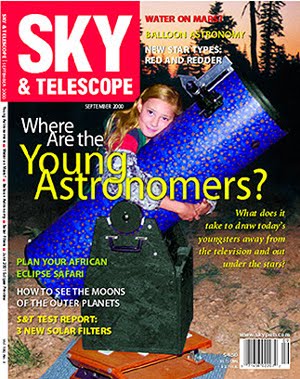Last night I taught a beginner astronomy class for the SJAA at Houge Park. After the class, I went outside and joined the public star party, using my 10" f/5.7 Dob. The idea was to show some of the constellations I'd described in the class, and show a few of the objects within them. Hercules, Ophiuchus, Serpens Cauda and Sagittarius.Green laser to outline the constellations. The green laser worked wonderfullyfor that - the sky, with some significant moisture content (things were getting pretty dewy) was brighter than the really good nights at Houge - it was nearly impossible to see the Milky Way other than as an imagined brightening higher up, through Cygnus mostly. But the bright stars that make up our recognized constellation figures showed decently enough.
I had forgottenthat I also had listed a few items in the club's newsletter - and some of the attendees were coming up and asking to see them in the telescope.NGC 7662 - The Blue Snowball - forget it. Way to bright down low in Andromeda. M11 - The Wild Duck, in Scutum... well... where the heck was Scutum in that muck? I had to pull out a chart to guess at the approximate location - but fortunately I landed right on the target. Interesting, finding people saying they saw the object, after it had drifted out of the field! I made sure to call them back, and have a good look. It is really a nice sight, and showed decently in the less than ideal conditions.
I had described and shown photos and drawings during class of M8 and M22 in Sagittarius. M8 showed well with a UHC filter - the glow and bright knotted sections of nebulosity were obvious, and the associated open cluster adding to the aesthetic. M22 looked washed out. Kind of disappointing, but it was there, and that was about as good as it got.
I took people on a tour of three double stars - which are easy on less-than-ideal nights. The obvious Albireo - bright and colorful. Then over to theEpsilon Lyrae, the Double Double - splitting nicely at high power. Everyone enjoyed that - and asked the usual question - "How many miles between them?" I dunno. A few arc-seconds? :-) Then I jumped over to Eta Cassiopeia, in order to show the copper penny. I love Eta Cass, what a great color.
There were long lines of people, and a good turnout of volunteers with telescopes. I am sure they were showing Saturn - even with it dropping down into the muck now. I finished up with a comparison of some globular clusters - M13, M92, and M15. Because of its highly condensed core of stars, M15 really showed the best. M13 and M92 required some "work" to see - and you certainly could resolve them, but I think it was too much for first timers to really "get it" when trying to see those dimly in the conditions. M15 on the other hand had that tight bright knot of deep core stars, and seemed to work well.
The one thing I would loved to have shown, but the conditions didn't allow, was the steam coming from the spout of the Teapot. I had describe that in class as well, but the real thing will have to wait for another night. So it goes, in amateur astronomy!
Sure had a fun time. Lots of interested beginners, and families with their kids.
Nights are getting longer, and weather is going to change. Get out and enjoy the sky, while you can.
| M11 - The Wild Duck Cluster |
I had described and shown photos and drawings during class of M8 and M22 in Sagittarius. M8 showed well with a UHC filter - the glow and bright knotted sections of nebulosity were obvious, and the associated open cluster adding to the aesthetic. M22 looked washed out. Kind of disappointing, but it was there, and that was about as good as it got.
| Eta Cassiopeia |
| Globular Cluster M15 |
There were long lines of people, and a good turnout of volunteers with telescopes. I am sure they were showing Saturn - even with it dropping down into the muck now. I finished up with a comparison of some globular clusters - M13, M92, and M15. Because of its highly condensed core of stars, M15 really showed the best. M13 and M92 required some "work" to see - and you certainly could resolve them, but I think it was too much for first timers to really "get it" when trying to see those dimly in the conditions. M15 on the other hand had that tight bright knot of deep core stars, and seemed to work well.
The one thing I would loved to have shown, but the conditions didn't allow, was the steam coming from the spout of the Teapot. I had describe that in class as well, but the real thing will have to wait for another night. So it goes, in amateur astronomy!
Sure had a fun time. Lots of interested beginners, and families with their kids.
Nights are getting longer, and weather is going to change. Get out and enjoy the sky, while you can.
















